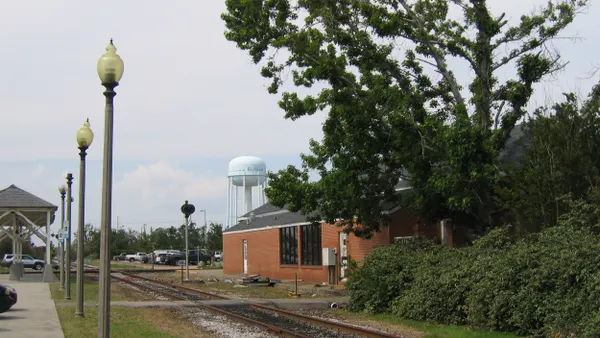Dive Brief:
- Researchers at the University of Maryland released a report revealing future growth in the Washington, DC-Baltimore region depends on how quickly autonomous vehicles (AVs) are adopted, as well as where governments allow growth to happen and the price of gas.
- The project from the university’s National Center for Smart Growth Research and Education, known as PRESTO, ran four possible scenarios of growth between now and 2040 using computer models.
- In those scenarios, all given different names, the researchers experimented with various factors, including air and water quality and transit accessibility for the two cities, as well as the surrounding counties and suburbs.
Dive Insight:
Cities continue to grapple with the impact of more AVs on their streets and how that will change driving and transit habits. The scenario PRESTO found to be most sustainable is entitled “Blue Planet,” and relies on gas prices rising, which then spurs investment in public transit and renewable energy. As the use of renewable energy grows in popularity, the research suggests the use of electric vehicles (EVs) does the same, while traffic congestion goes down as housing is built closer to jobs and people use transit more.
It is certainly an intriguing look into the future of the region, and the report's assertion that DC and its inner suburbs including Alexandria and Arlington County, VA and Prince George’s County, MD could run out of available land is fair, given the tight squeeze those jurisdictions are already experiencing. Environmental advocates should be worried about how growth may also affect agricultural and forest areas, both of which are useful in reducing emissions and fighting climate change.
Only one scenario, dubbed "Revenge of the Nerds," is bullish on the growth of AV usage. It suggests that while gas prices remain low, people are more inclined to drive. However, the increased number of AVs on the road means less traffic congestion as they can drive closer together, enabling the streets to carry more. But it also means pollution may rise in correlation to the increase in AVs, while ridership on public transportation goes down and previously undeveloped land is built on. That scenario could be an issue in DC, which has seen ridership on its Metro public transportation system go down for the past several years, with blame being placed on ride-hailing in part for that reduction.
The use of transit and AVs need not be mutually exclusive, and the report suggests that governments provide more driverless transit or incentives for ride-sharing. But both Baltimore and DC have already shown themselves to be forward-thinking and innovative, so they should be well placed to manage growth and the adoption of new technology, regardless of the ups and downs of gas prices.










